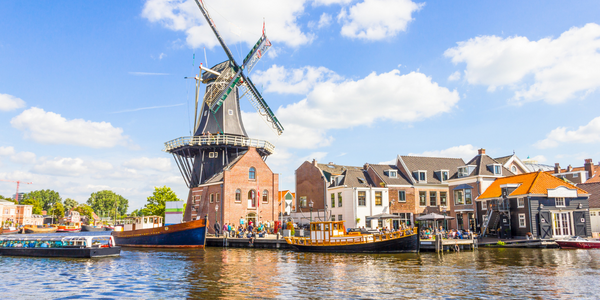Customer Company Size
SME
Region
- America
Country
- United States
Product
- Planning Maestro
- Elite
Tech Stack
- Budgeting Software
- Accounting Software
Implementation Scale
- Enterprise-wide Deployment
Impact Metrics
- Productivity Improvements
- Cost Savings
Technology Category
- Functional Applications - Enterprise Resource Planning Systems (ERP)
Applicable Industries
- Cities & Municipalities
Services
- Software Design & Engineering Services
About The Customer
The Housing Authority of Snohomish County (HASCO) is a nonprofit, government agency that provides housing solutions for the people and communities of Snohomish County in Washington state. HASCO partners with people who need support to achieve housing stability; communities to develop and maintain high quality housing for people at all stages of life keeping families neighbors and neighborhoods intact; as well as social service organizations helping individuals and families make progress in life. HASCO works with federal and local programs that help with rent, provide affordable housing and support tenants with services. HASCO leads within a network of housing services providers, working toward a future where all Snohomish County residents have good quality housing, and places to call home.
The Challenge
The Housing Authority of Snohomish County (HASCO) is a nonprofit, government agency that provides housing solutions for the people and communities of Snohomish County in Washington state. HASCO has two primary sources of revenue – reimbursement they receive from “HUD” – the United States Department of Housing and Urban Development – for the Section Eight housing vouchers they administer and rental income from the properties the organization owns throughout the county. Prior to discovering Centage, Jenny Barker, senior budget manager at HASCO, and her team had been using Excel for their budgeting and planning. However, due to the complex requirements of being a government entity, especially when it came to managing and tracking multiple allocations, Excel was not powerful enough to meet their needs.
The Solution
HASCO adopted Centage's Planning Maestro, a modern FP&A platform that provides a better way to plan, budget, forecast and report financial performance. The platform integrates seamlessly with their accounting software, Elite, and operates as an extension of the GL, pulling in actuals data so the HASCO team could monitor and analyze budget vs. actuals on an ongoing basis. The platform automatically adjusts projected revenues, expenses, and the anticipated bottom line, offering transaction-level detail. Budget vs. actual analysis is simplified with the ability to drill down and understand why variances occurred, providing valuable insight into current and forecasted performance. In addition, HASCO uses Planning Maestro to calculate rental revenue, allowing for instant updates when rent amounts change.
Operational Impact
Quantitative Benefit

Case Study missing?
Start adding your own!
Register with your work email and create a new case study profile for your business.
Related Case Studies.

Case Study
Turning A Stadium Into A Smart Building
Honeywell created what it called the “intelligent system” for the National Stadium in Beijing, China, turning the venue for the opening and closing events at the 2008 Summer Olympics into a “smart building.” Designed by highly controversial artist Ai Weiwei, the “Bird’s Nest” remains one of the most impressive feats of stadium architecture in the world. The 250,000 square meter structure housed more than 100,000 athletes and spectators at a time. To accommodate such capacity, China turned to Honeywell’s EBI Integrated Building Management System to create an integrated “intelligent system” for improved building security, safety and energy efficiency.
.png)
Case Study
Smart Street Light Network (Copenhagen)
Key stakeholders are taking a comprehensive approach to rethinking smart city innovation. City leaders have collaborated through partnerships involving government, research institutions and solution providers. The Copenhagen Solutions Lab is one of the leading organizations at the forefront of this movement. By bringing together manufacturers with municipal buyers, the Copenhagen Solutions Lab has catalyzed the development and deployment of next-generation smart city innovations. Copenhagen is leveraging this unique approach to accelerate the implementation of smart city solutions. One of the primary focus areas is LED street lighting.

Case Study
Buoy Status Monitoring with LoRa
The Netherlands are well-known for their inland waterways, canals, sluices and of course port activities. The Dutch Ministry of Infrastructure indicates that there are thousands of buoys and fixed items in and near water environments that would profit from IoT monitoring. One of the problems with buoys for example, is that they get hit by ships and the anchor cable breaks. Without connectivity, it takes quite some time to find out that something has happened with that buoy. Not to mention the costs of renting a boat to go to the buoy to fix it. Another important issue, is that there is no real-time monitoring of the buoys at this moment. Only by physically visiting the object on the water, one gains insight in its status.

Case Study
Barcelona Case Study
Barcelona’s heavy traffic and its associated high levels of pollution were the primary factors that motivated some companies and universities to work on strategies for improving traffic in the city centre. Bitcarrier is one of the technologies involved in the In4Mo Project, whose main objective is to develop the applications that form the core of smart mobility, one of the fundamental pillars of the smart city concept.

Case Study
China Mobile Smart Parking
Smart Parking, powered by NB-IoT technology, is making it easier for drivers to find free parking spots. Cities can better manage their parking assets and maximize the revenue available to them as a result. Drivers searching for parking create congestion and pollution by circling and hunting for available parking. Smart Parking services are able to significantly ease these problems by guiding a driver directly to a parking space.








